Leiden Student Journal: A serendipitous finding
In Leiden Student Journal LSM features a student whose research or internship has lead to a scientific publication. In this article: Maarten Lubbers' Laboulbeniales
Do you ever dream of publishing your internship results? For Maarten Lubbers, former masters student in Biology and current PhD candidate at Leiden University, this dream became a reality. He recently co-authored a paper in Sydowia, a peer-reviewed mycology journal, about his novel findings on bacterial biofilms associated with an order of microfungi known as Laboulbeniales.
It was during his masters that Maarten first heard about the group of Danny Haelewaters, where he conducted his research on Laboulbeniales, co-supervised by Menno Schilthuizen. “Our story actually started with my second supervisor, Menno Schilthuizen. I got to know him because I did a course in tropical biodiversity and conservation biology in Borneo, Malaysia. Having published a paper on the behavior of an elusive mantis species, we wanted to collaborate more in the future and that’s how he introduced me to Danny Haelewaters. I had also never heard about these fungi called Laboulbeniales before, and that’s how it actually started.”
During his internship, Maarten studied a collection of insect specimens, from ladybirds to ground beetles, some of which are infected with different species of Laboulbeniales. The term Laboulbeniales can be quite a mouthful for those of us who have never heard of them before. Simply said, Laboulbeniales (colloquially known as “labouls”) are fungi that live on arthropods such as beetles, flies, ants, millipedes, and harvestmen.
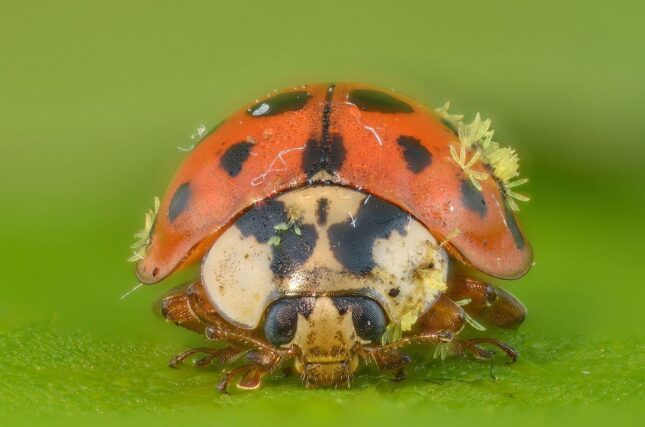
Harmonia axyridis (lieveheersbeestje) infected by Laboulbeniales. Image: Gilles San Martin
“We observed insect specimens that were freshly collected but also specimens that were already fixed in ethanol. Our initial goal was to observe infection sites of the fungi, where they make contact with their host. What is interesting is that many species of Laboulbeniales are still to be discovered and the cool thing is that they’re small but not so small that you can’t see them without a hand lens. If you have a hand lens you can observe them pretty easily. Because of that they have already been described in the 1880s; 140 years ago.”
However, it wasn’t until recently that people started to conduct more genetics research on Laboulbeniales. Maarten explains, “They are a very interesting model for host-parasite relations. For example, some of these fungi live on ladybirds and they’re quite common in places like the Netherlands and Belgium. So because of that you can relatively easily collect them. On the other hand, it’s interesting to see if the infection pattern is the same for all Laboulbeniales taxa. There are Laboulbeniales that are very specific and only occur on one host. There are also other fungi that live on multiple hosts; so then you can see where the difference comes from.”
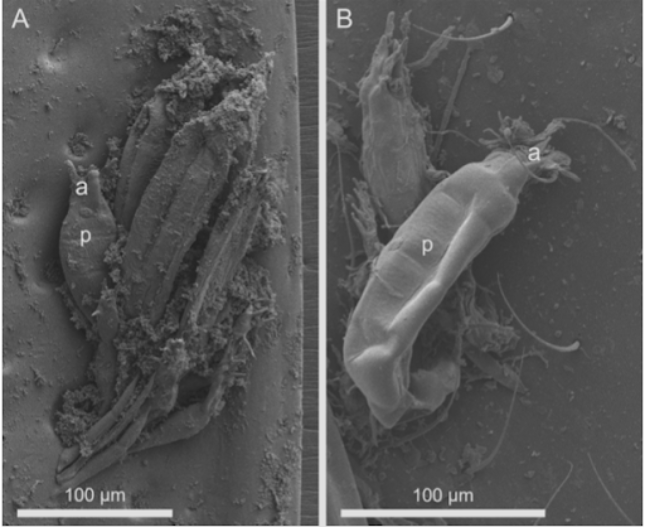
A) Thalli (microscopic filaments) of Hesperomyces virescens, a species of Laboulbeniales, on a fixed specimen of Harmonia axyridis (Asian lady beetle). B) Thalli of Hesperomyces halyziae, species of Laboulbeniales on Halyzia sedecimguttata (orange lady beetle). Source: Lubbers et al., Sydowia, 2022.
The coincidental finding of biofilms
It may initially be thought that the scientific research method follows a straight, rigid line. Lo and behold, many of us most likely know out of experience that this is scarcely the case and that research is often a creative journey, taking unexpected turns. This was also true for Maarten. “The fun thing was that we discovered biofilms by accident.”
“We had the insect specimens stored in alcohol but also fresh specimens, so we could compare them to see where these bacteria were present and then we saw that they were very abundant on the fungi instead of the integument (the host surface). That was the fun part of the internship; it was really a way to create my own research line, like what do I want to do, what is already known, and what can still be done.”
The coincidental finding of biofilms associated with Laboulbeniales opens up new possibilities for future research. When asked about the importance of biofilms themselves, Maarten insinuates a knowledge gap. “That we don’t know. We’re not sure what their evolutionary advantages would be. So if they have for example negative effects, no effect, or positive effects, that’s not sure, we don’t know yet.”
More important is the fact that the presence of biofilms on Laboulbeniales adds a new dimension to the host-microbe interactions that are known, which may indicate more about Laboulbeniales and how they function. “One interesting aspect of these fungi is that we still don’t know how they obtain nutrients from their environment. One possibility is that the bacteria create specific molecules that can be taken up by the fungus. It’s a completely new field and it would also be nice to see whether they occur in other species.”
“For example, there are Laboulbeniales specific to flies that are ectoparasites of bats. The addition of bacteria adds a new dimension to these relationships. That would be interesting of course to see. You can think of it as a chain consisting of all these interactions that are going on in the specific web.”
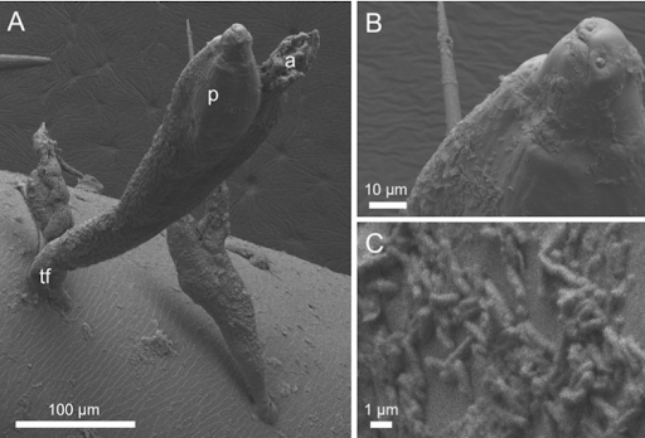
Bacterial biofilms associated with Laboulbenia collae, Laboulbeniales species, infecting Paranchus albipes (ground beetle). A) Two mature thali. B) Perithecium covered with bacteria. C) Close-up of the biofilm. Abbreviations: a - appendages, p - perithecium, tf - thallus foot. Photos and descriptions were retrieved from Lubbers et al., Sydowia, 2022.
Challenges in times of COVID and the use of SEM
The circumstances in which Maarten conducted his research shaped the direction of his research. As Maarten started his internship during the COVID-19 pandemic, many aspects had to be adapted.
“One of the challenges was not being able to travel to Belgium of course. That was a restriction because I had to change the whole research plan. My research would have actually focused on these fungi in caves in Georgia. So I would’ve gone to Georgia to collect insects to find the fungi associated with them, and to see what their distribution was. Because of the pandemic we canceled that. I therefore had to reshape the programme and my research lines to perform research at Ghent University in Belgium. However, then I also couldn’t go to Belgium so I had to change my research plan two times; that was the central challenge.”
Maarten eventually did his lab work at the Institute of Biology Leiden (IBL), where he took advantage of the resources available. In contrast to the traditional technique of light microscopy, which Maarten himself had used in previous research, he used scanning electron microscopy (SEM). For this he used the help of Gerda Lamers, researcher at the IBL and one of the co-authors of the paper.
Maarten explains: “SEM is a technique that uses a beam of electrons on a specific specimen and with that you can zoom in way further than with the standard light microscope.” This technique involves coating a specimen of interest with a small layer of metal. Instead of light, the scanning electron microscope emits a beam of high energy electrons that are focused on the coated sample of interest using a set of lenses. The interaction between the electron beam and the surface generates a variety of emitted secondary electrons (signals) that are reflected back to an electron detector. These signals are then used to create a magnified scan reflecting the surface morphology of the specimen in high resolution.
All of Maarten’s communication with his first supervisor was virtual. “It was quite strange because I never got to see Danny in real life. I was of course here and not in Belgium, so that was quite strange. We will, however, meet each other soon as I will visit his lab soon. I’m still giving advice on specific parts within his research lines. But of course with the whole COVID situation you have to improvise and have to find your ways in communication.
The publishing process
Effective and clear communication is often one of the key points for a successful internship. Maarten advises other students to be expressive of their interests in publishing. “Make sure to communicate to your supervisor that you want to help with publishing. Many supervisors might not know that students are often very interested in helping to write a publication. So just discuss it with your supervisor and say you would be interested to help in the future also. Try to conduct good research and ensure that you can make a publication with those results.”
Maarten enthusiastically recalls the publishing process as a positive experience. “I like the process. I like giving feedback and love receiving feedback from other researchers, so that was very positive. The peer reviewers were very positive about our results. It’s a new field so the manuscript got accepted quite quickly, luckily. It’s nice to see the whole process of starting a simple outline in a Google Drive document and in the end seeing it online.”
Although he is no longer working in the group of Danny Haelewaters, Maarten still sees many future opportunities for collaboration on the topic. “There are probably also various other papers that will come from this and then I would love to help with writing the manuscripts and giving scientific advice.”
When asked about the next expected research developments on Laboulbeniales Maarten mentions genome sequencing. “The fun thing with these fungi is that they’ve already been researched since the 19th century but only recently people have started to look into their genomics and also other aspects. We also have to sequence the bacteria to see if there are more interactions, to conclude any more from that.”
Concluding remarks
Overall, Maarten’s research findings are exemplary for a result that stems from creativity, unwavering persistence, and a sheer sense of curiosity for the unknown. As emphasized in his paper, Laboulbeniales and their newly discovered associations with biofilms lay the foundation for a bright future of further research on these intriguing fungi and their interactions.
References:
Lubbers M, Lamers G, De Kesel A, Nedved O. Bacterial biofilms on thalli of Laboulbeniales: a community uncovered. Sydowia. 2022;74:335-342. https://doi.org/10.12905/0380.sydowia74-2022-0335, http://www.sydowia.at/syd74/T2...
Research group of Danny Haelewaters:
http://www.dannyhaelewaters.com/
https://www.dannyhaelewaters.com/research/student-research/biofilms-op-laboulbeniales-zwammen/
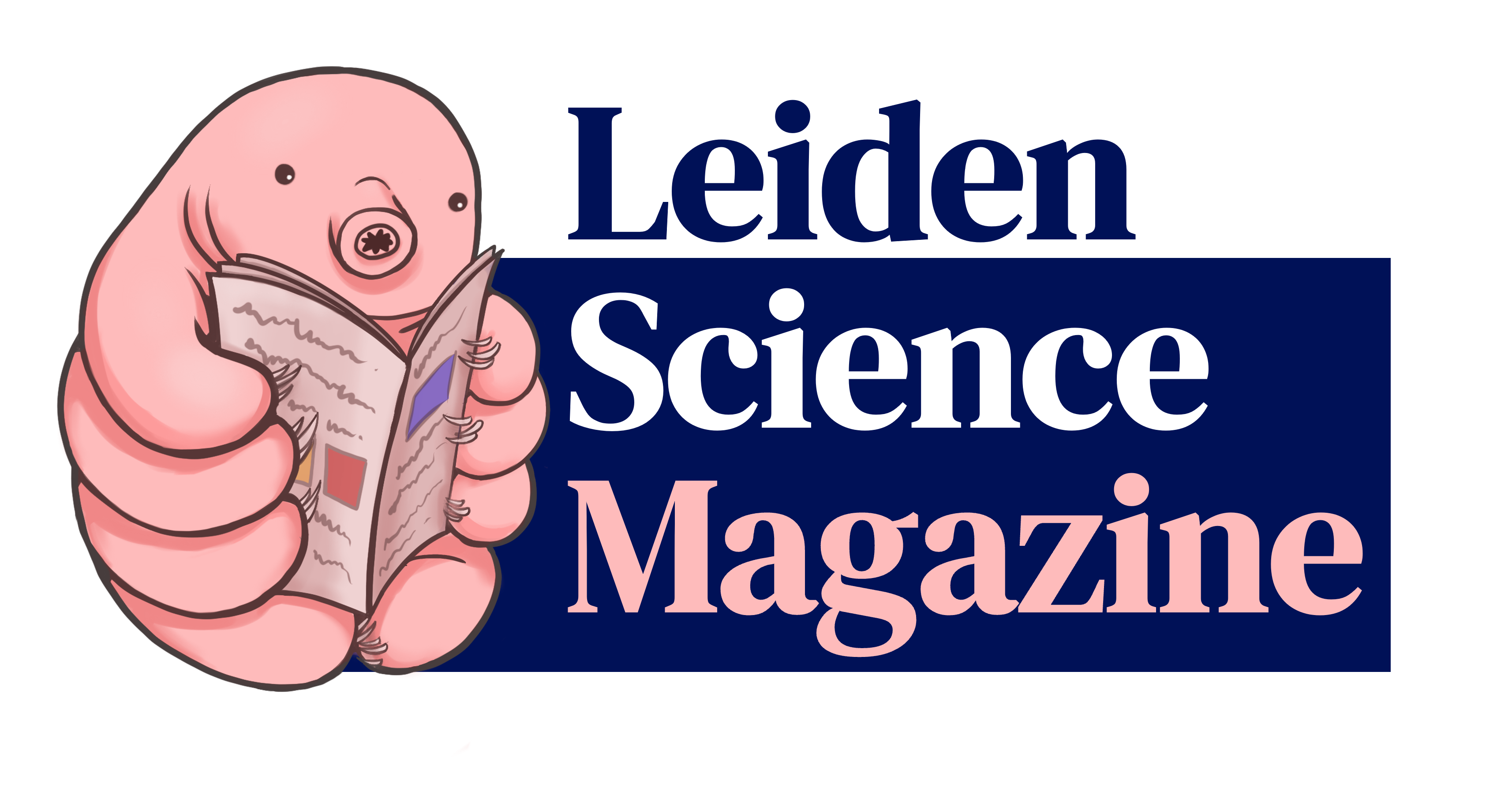


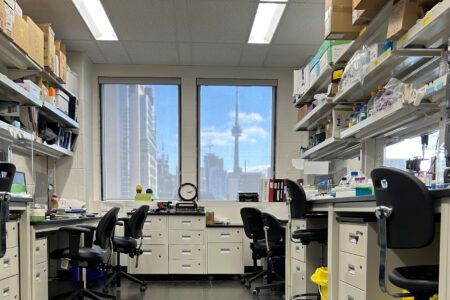

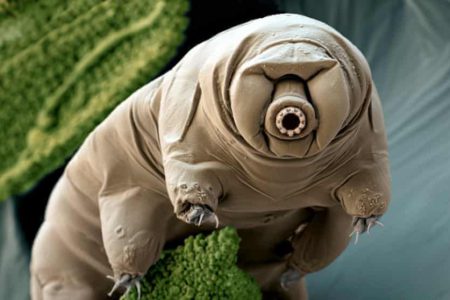
0 Comments
Add a comment